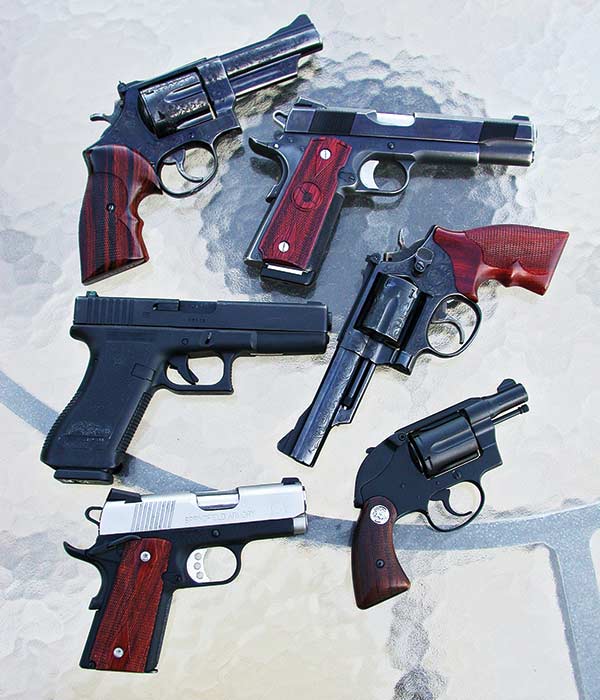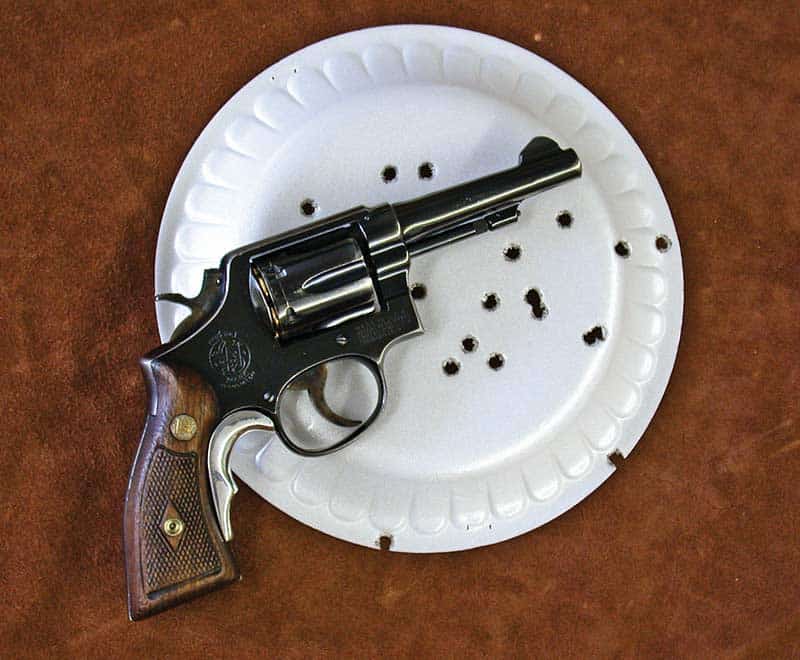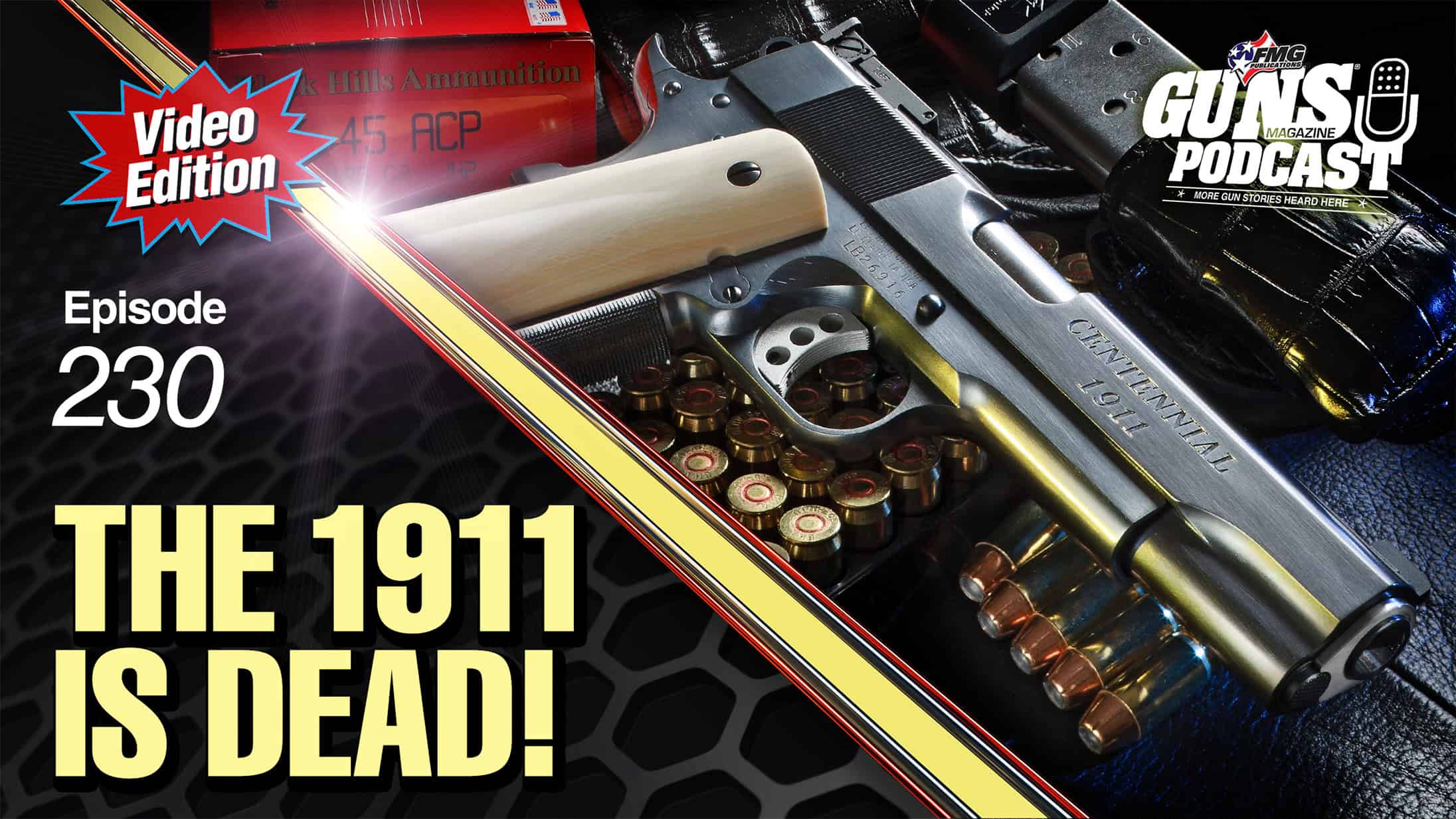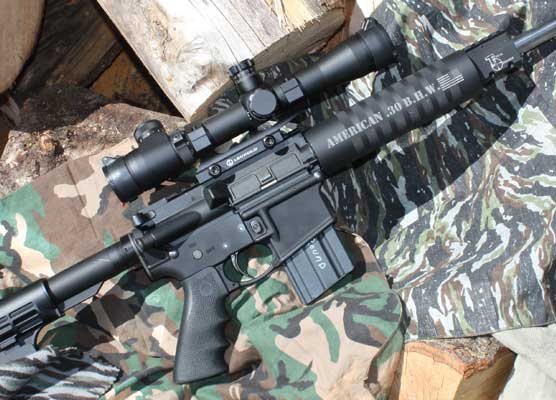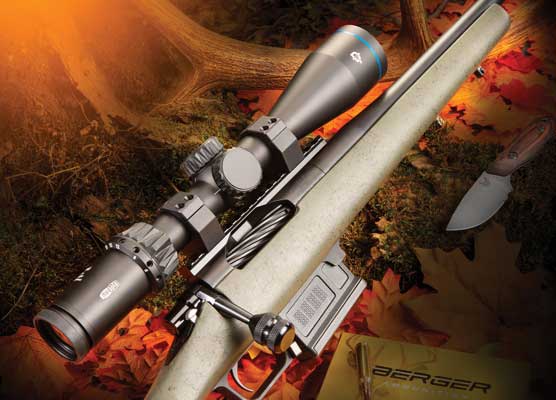Combat Marksmanship Vs. Range Marksmanship
Is there a difference?
Disclaimer: I hereby go on record up front as saying the partial views on the following subject are my own based on practical and teaching experience over 30 years and do not necessarily represent the views of the editorial staff or this magazine.
What is Combat or Range Marksmanship? Actually I do not think there is a difference between the two as far as the end result, which is, of course, to hit the target. The components of accuracy include where the target was hit, power of the “hit” (depending on the cartridge being used) and the timing, also often called “speed” of delivery. Therefore a powerful projectile that doesn’t hit anything or a hit with a mediocre cartridge or a hit coming late or any combination of these things can negate the potential for an end to the problem at hand. You gotta hit ’em or it doesn’t count.
Other Components
The Stopwatch. If I could give one “gift” to all of my students, it would be the skill of adjusting their mental clock to realize what time-frame-wise was required to hit their target in question. I personally have never seen a stopwatch in a fight and I personally have never met anyone who saw a stopwatch in a fight. That said, it is still imperative the shooter realize how long it takes “them” to hit the target in question.
This time will of course vary on a case-to-case basis based on, to name a few things, threat proximity, threat visual availability, duress of application, the environment one is working in to include bystanders, lighting conditions, incoming rounds, personal marksmanship skills and even a dose of possible prior combat experience with all of these subjects of course being arguable by the resident subject matter expert.The key is to work diligently to establish this skill.
The Gun … Bigger?
I have never met anyone who was in a fight who wished for a smaller gun, especially in the handgun forum. Probably you are best served by carrying the biggest gun(s) you will actually carry on a day-to-day basis. And if you must go to a fight take the biggest gun(s) you have.
I have never met anyone who was in a fight that wished for less ammunition. Regarding the “Target / Marksmanship Problem,” all shooting marksmanship should be precise in placement and in some cases there may be a need for surgical projectile placement. Generally the target by most standards is large — like in a size of a human from crotch to helmet. The biggest point is, most often the target is moving and that is an issue not often addressed in training. I also firmly believe hitting a moving target and especially hitting a moving target while you yourself are moving is a complex acquired skill requiring regular practice to obtain a reasonable skill level. Note I didn’t say it couldn’t be done … I said it would require practice. Candidly, more targets have been shot at and missed than have ever been hit. I offer as modest proof: If every round of centerfire ammunition — since its invention — ever fired in anger had hit its intended target there would be no life on this planet.
Ballistics
Ballistics consists of three things. Without boring anyone to tears, they are internal, what happens inside the weapon, external being what happens outside the weapon and terminal as in when it hits the target. Some folks really like shooting the ballistic jelly stuff and in fact they often prove a point they were trying to market. Anyways, I am pretty sure whoever we might shoot probably never read a book on ballistics, so it might not matter to them what they were shot with. It matters even less to me from a teaching standpoint. I think we should plan on what we shoot not working and our next response is …?
A bull’s-eye target has never attacked me nor a soda can, so I am not sure if these items are proper representations of what we should practice shooting at. A paper plate has also never attacked me and yet on occasion I mention this as a reasonable size for a target to practice on if where one practices humanoid targets are not appropriate or if one doesn’t wish to project the image of shooting for personal defense yet wished to acquire reasonable skills for personal defense. Of course we need to consider the paper plate is not shooting back. A reasonable target, whether head on or sideways, is to engage a centered strip a nominal 3″ wide from crotch to head. If you’re hitting that strip pretty regularly, it is getting about as good as it is going to get with a handgun.
This is a double edge sword. Your command presence and a well controlled firearm may intimidate your threat. I recommend against pointing the muzzle at something you do not plan to shoot. Whether or not you shoot is based on what they do — not on what you do. If they are stupid or pushy, then their actions may get them shot.
The flaw here is if they have a gun, they probably have already made up their mind to shoot while you still maybe deciding. Intimidation in reverse, most new students allow themselves to be buffaloed by the head shot in range drills when they move from the body, as in a failure drill. It appears the thought is the head is smaller when in fact it is generally just different.
Under stopwatch listed above, here is where we need to “know” — how to shift gears and shoot at a speed we “know” we can hit at.
I am not a strong proponent of lasers because their makers and, worse, their marketing people, often misrepresent them. But — I am a strong proponent of lasers when they are used by smart people who know there isn’t a laser made to compensate for a jerk jerking
on the trigger. I am also a proponent of people using the iron sights on their guns in addition to — if one chooses — a laser if it serves a purpose. The use of lasers can be very helpful should there be a loss of corrective lens, altered light or fighting/firing position environments or in moving targets conflicts. Lasers, when used by skilled trigger manipulators, can help put hits on targets and hits are the only thing that count.
I guess we all know about this, then again, maybe we all don’t train to it as much as we should. I think and train to constantly attack all three zones: pelvis, chest and head of natural armor the threat has. It is probably wise to not set a pattern but to constantly change where and how many rounds we shoot. Since many threats have been shot multiple times and continued to fight, I see no sane reason to shoot two rounds and lower the muzzle.
In reality we should shoot all of the available three zones and plan to do so with every round in the gun until we get compliance. If the threat goes down, I would be even more skittish about the fight until I got some cover or distance or both and confirmed the fight was in fact over. Quite a few folks have been shot by somebody they shot first or — even worse — they shot and assumed the fight was over … and it wasn’t. Shoot them and get ready to shoot them again. It is in fact why we brought the ammo along.
Range Drill Vs. Fight Gunfire Responses
I have seen some classes end with mad minute drills where we dump all the extra ammo into the berm not shot in the class. A couple of points come to mind for me here. Why work on marksmanship for days if the last thing we put in our head before we leave the range is dumping the magazine? Eight hundred rounds fired well in a class are better than 1,500 fired crappy or just for volume’s sake.
So, no mad minutes, yet we should plan on shooting every round we brought to the fight, one round at a time in one of the three armored zones.
So, shoot ’em all, just do it one round at a time. And hit the target.

Sign up for the Personal Defense newsletter here:
